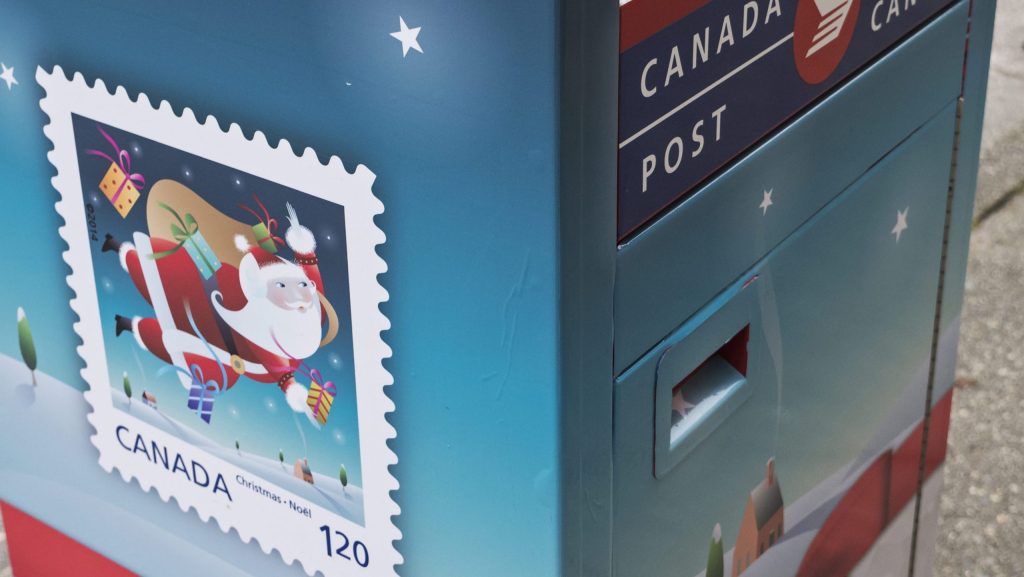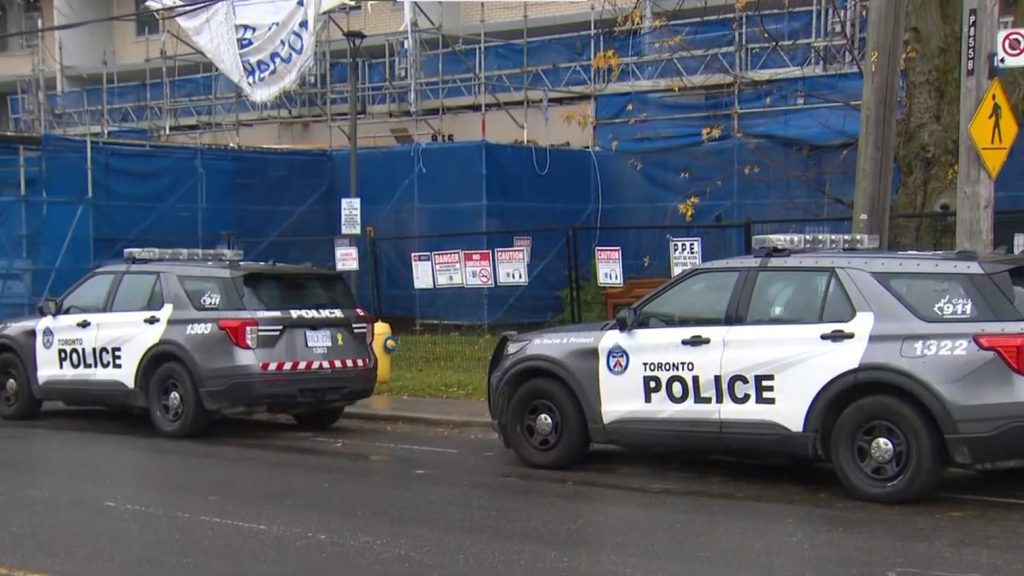Officials install metal door during raid of illegal pot shop in CityPlace
Posted April 16, 2019 9:50 pm.
Last Updated April 17, 2019 4:36 pm.
This article is more than 5 years old.
Bylaw officers in Toronto installed a large metal door in an effort to keep an illegal pot shop in CityPlace closed during a raid on Tuesday.
Officials told CityNews that the operators of the dispensary known as Café, on Fort York Boulevard, bypassed new locks that were installed in another raid by the city on Monday. The shop was able to reopen overnight.
Although the door at Café has been changed and the location is essentially shut down, it appears these efforts are not stopping the dispensary operators from selling.
Employees of the closed pot shop could be seen standing outside of the store on Tuesday afternoon, directing customers to another location to purchase cannabis.
Toronto’s director of investigation services for Municipal Licensing and Standards, Mark Srega, is working to shut down every illegal pot shop in Toronto. He said a team of nine city staff close dispensaries every week, only to see new operations spring up in their place.
“Currently we have a manageable number of illegal stores in the city. We are now down to 21 illegal stores … Prior to legalization coming into effect we had well over 90 illegal stores. We will be doing this enforcement action continually as long as there is illegal cannabis stores operating in the city,” Srega said.
He cites the persistent presence of these illegal dispensaries as evidence that legalization has not yet come close to fulfilling one of the federal government’s primary goals.
“The national strategy was to eliminate the legal market in cannabis,” Sraga said. “To me it’s been a failure on that policy issue because the illegal market is thriving.”
The city says 41 charges have been laid from dispensary raids since the cannabis act took effect on October 17, 2018.
During the raid on Tuesday, a cyclist was hit by a taxi outside the pot shop. The cyclist had minor injuries as a result, paramedics told CityNews.
The faces of Canada’s illegal cannabis market are as varied as the legal regulatory schemes currently unfolding across the country, experts said, noting unlicensed dispensaries are not prevalent in every province.
But preliminary numbers support critics’ assertions that removing penalties for recreational cannabis use is not enough to stamp out black market activity.
Data prepared by Statistics Canada indicates consumers spent $1.48 billion on cannabis products during the last three months of 2018. The agency reports, however, that 79 per cent of that money was spent on the illegal market.
Michael Armstrong, a Brock University associate professor who has been studying the business side of legalization, said the numbers paint a more nuanced picture when broken down by province.
Working from StatCan and Health Canada data, Armstrong said he’s observed that legal market share is highest in provinces that have opened more physical storefronts per capita than in those that have limited legal sales to online outlets or put a tight cap on the number of brick-and-mortar retailers.
In provinces that have made legal purchasing more feasible, such as Prince Edward Island, Nova Scotia and Alberta, legal cannabis sales made up between 29 and 39 per cent of market activity, Armstrong said. But in Ontario, where pot could only be purchased legally online until April 1, legal market share was just 13 per cent during the quarter.
The situation was worse in British Columbia, he said, noting the province’s one legal storefront and online sales operation took in just four per cent of the cash consumers spent on cannabis during the quarter.
There, as in Ontario, dispensaries that figured largely in the black-market landscape prior to legalization are once again doing brisk business.
Last week the province’s public safety minister announced a provincewide enforcement team put in place last fall would start to ramp up its efforts to make the dispensaries close their doors.
Mike Farnworth said the 44-member team wouldn’t immediately be shutting down unlicensed pot stores but would instead inform operators about new licensing regulations governing marijuana sales in the province.
“I think, right now, what they have been doing is what you could call education, visiting illegal operations and letting them know (the team) is up and running,” Farnworth said.
Police in Ontario have taken a more aggressive approach, with 10 forces across the province banding together to shutter dispensaries.
Ontario Provincial Police Det. Insp. Jim Walker said the various police services have formed a joint task force that’s made at least 44 arrests since its activities kicked into high gear in January.
Led by the OPP, the joint task force has been acting on intelligence the provincial government gathered about the cannabis black market in the year before legalization, he said.
Walker, who is deputy director of the force’s Organized Crime Enforcement Bureau, said that while illegal online operations and pop-up shops are surfacing with increasing frequency, dispensaries still make up the bulk of the team’s work.
Illegal storefronts are still highly lucrative, Walker said, adding officers with the task force have dismantled businesses bringing in daily totals of as much as $20,000.
“There’s a reason individuals are doing it and it’s not for the betterment of the community,” he said. “It’s because of the significant amount of money to be made.”
Armstrong, however, questioned the effectiveness of the police strategy, noting that closing a dispensary is more likely to force the proprietor to conduct business underground rather than cease operations altogether.
“If you shut them down, you don’t shut down demand, you’re shutting down that one supplier,” he said. “Shutting down dispensaries is an important step once there’s a legal alternative. Until there’s a legal alternative, I see it as largely a waste of police resources.”
Demand on local police was one of the factors that resulted in Sraga’s team taking over storefront enforcement in Toronto.
The task remains daunting, he said, with the number of dispensaries staying stubbornly above the 20 mark as the province’s handful of legal operations open their doors and stock their shelves.
Sraga views his team’s efforts as crucial work, but agrees with Armstrong that enforcers face an uphill battle until supply shortfalls are addressed and legal retailers are in a position to give customers what they want.
“There’s clearly a supply-and-demand issue, and these illegal storefronts are capitalizing on that,” Sraga said. “It’s unfortunate that we entered into a legalized environment without ensuring that there was an adequate supply to satisfy that demand.”
Files from The Canadian Press were used in this report








